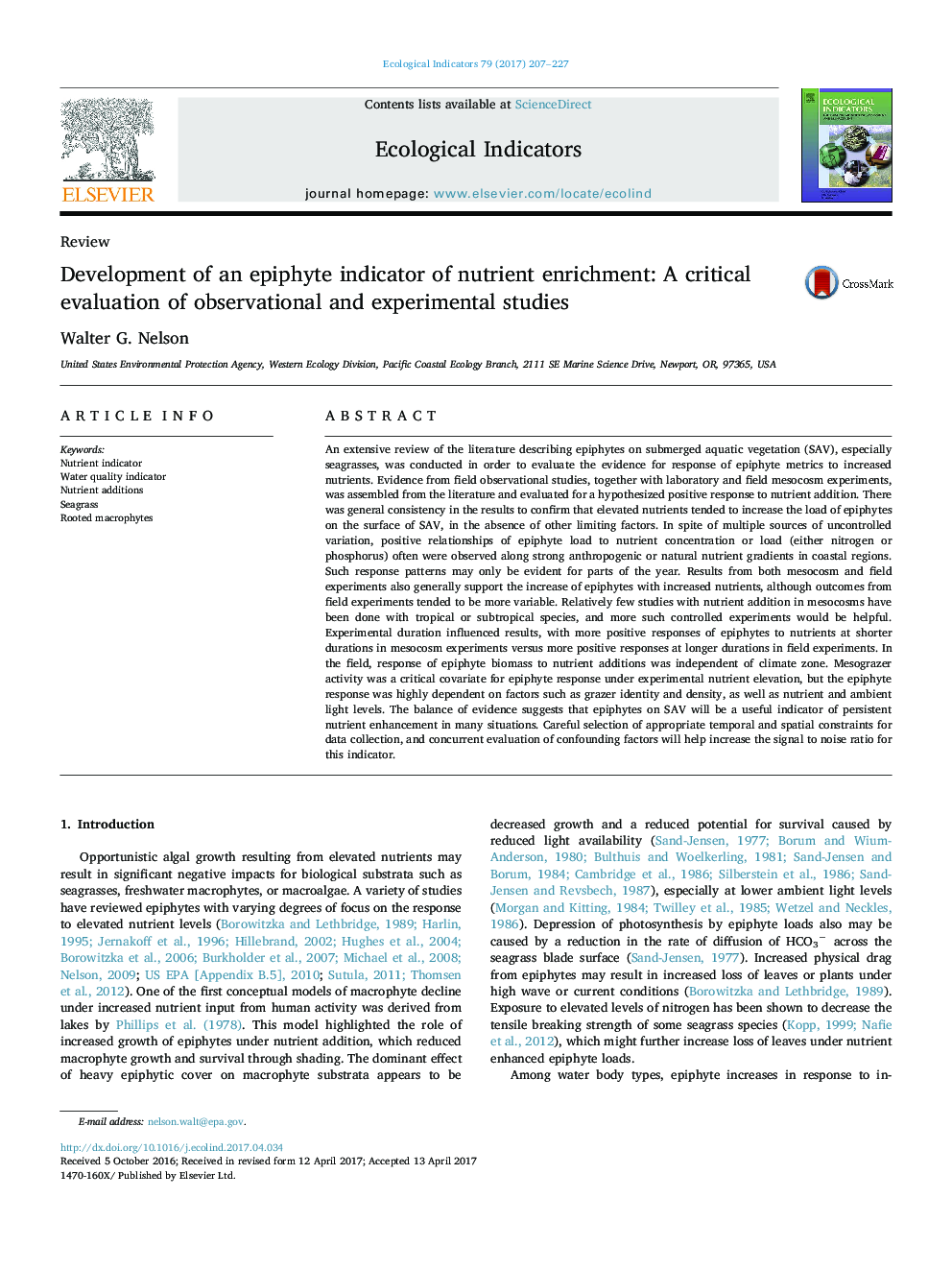| Article ID | Journal | Published Year | Pages | File Type |
|---|---|---|---|---|
| 5741769 | Ecological Indicators | 2017 | 21 Pages |
â¢Epiphyte load may be a useful indicator of persistent nutrient enhancement in many situations.â¢Multiple lines of evidence confirmed that elevated nutrients tended to increase epiphyte load on seagrasses without other limiting factors.â¢Proper scale for data collection and concurrent evaluation of confounding factors will increase the effectiveness of an epiphyte load indicator.
An extensive review of the literature describing epiphytes on submerged aquatic vegetation (SAV), especially seagrasses, was conducted in order to evaluate the evidence for response of epiphyte metrics to increased nutrients. Evidence from field observational studies, together with laboratory and field mesocosm experiments, was assembled from the literature and evaluated for a hypothesized positive response to nutrient addition. There was general consistency in the results to confirm that elevated nutrients tended to increase the load of epiphytes on the surface of SAV, in the absence of other limiting factors. In spite of multiple sources of uncontrolled variation, positive relationships of epiphyte load to nutrient concentration or load (either nitrogen or phosphorus) often were observed along strong anthropogenic or natural nutrient gradients in coastal regions. Such response patterns may only be evident for parts of the year. Results from both mesocosm and field experiments also generally support the increase of epiphytes with increased nutrients, although outcomes from field experiments tended to be more variable. Relatively few studies with nutrient addition in mesocosms have been done with tropical or subtropical species, and more such controlled experiments would be helpful. Experimental duration influenced results, with more positive responses of epiphytes to nutrients at shorter durations in mesocosm experiments versus more positive responses at longer durations in field experiments. In the field, response of epiphyte biomass to nutrient additions was independent of climate zone. Mesograzer activity was a critical covariate for epiphyte response under experimental nutrient elevation, but the epiphyte response was highly dependent on factors such as grazer identity and density, as well as nutrient and ambient light levels. The balance of evidence suggests that epiphytes on SAV will be a useful indicator of persistent nutrient enhancement in many situations. Careful selection of appropriate temporal and spatial constraints for data collection, and concurrent evaluation of confounding factors will help increase the signal to noise ratio for this indicator.
